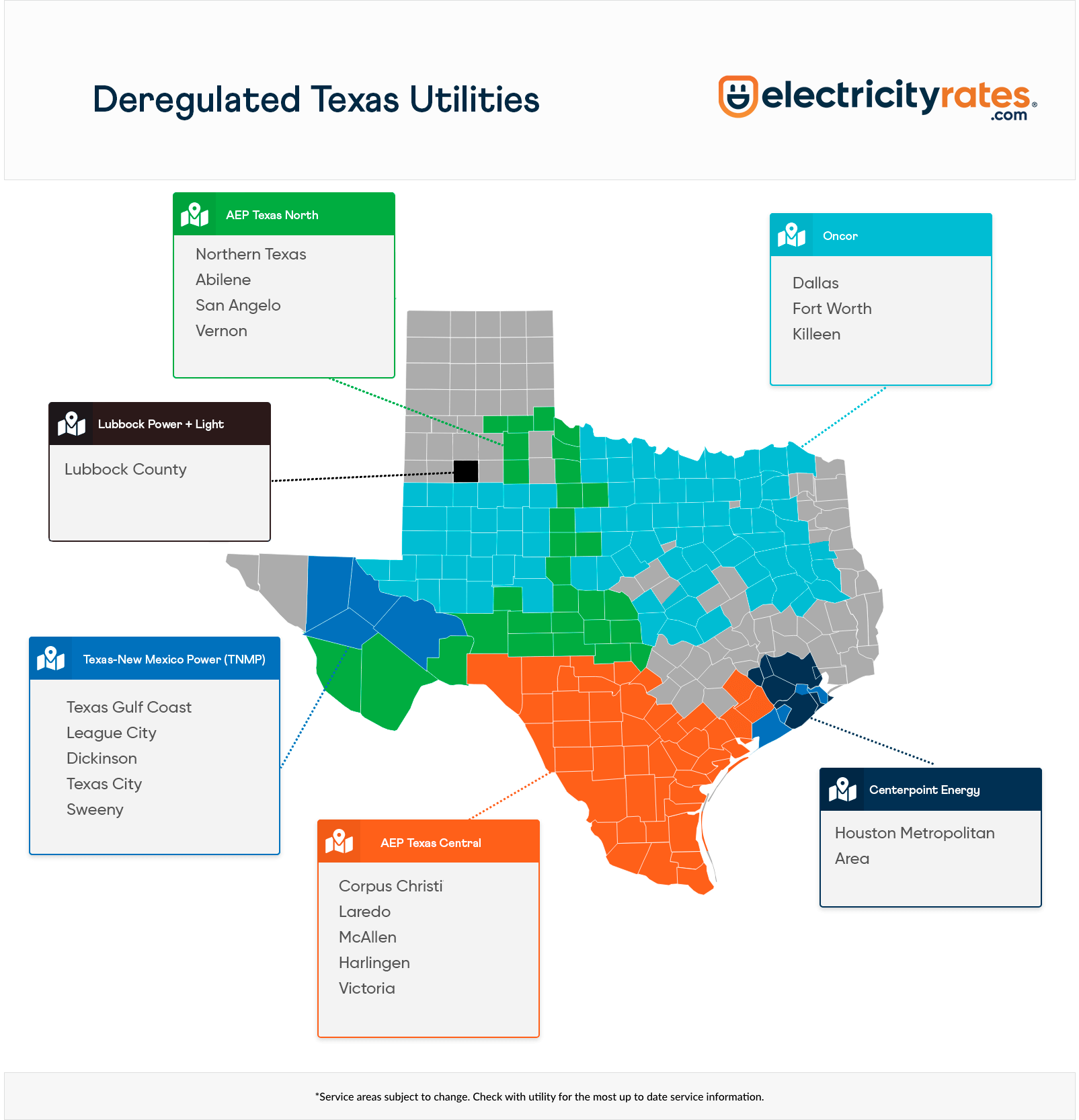The browser you are using is not supported. Please consider using a modern browser.

Why is Electricity So Expensive in Texas?
Texas-Sized Electric Bills: Breaking down the reasons and what you can do.
Key Takeaways
- Texas’s independent power grid and deregulated market make electricity prices volatile. ERCOT is now connecting to the U.S. grid to improve reliability.
- Extreme weather and natural gas prices drive costs up, with record heat waves and winter storms causing spikes in demand and supply issues.
- Texans can lower their bills by shopping for electricity during off-peak seasons, using energy-efficient appliances, and taking advantage of assistance programs.
Texas is famous for doing things its own way—barbecue, football, and yes, even electricity. Lately, however, one thing Texans don’t love is their sky-high energy bills. If you’re wondering, “Why is my electric bill so high in Texas?” or “Why does my bill keep going up every month?” you’re not alone.
Energy prices in the Lone Star State have been soaring, leaving homeowners and businesses scrambling to understand why. Let’s break it down: Texas’s unique electricity market, independent power grid, and factors like extreme weather, natural gas prices, and deregulation all play a role. Here’s everything you need to know—and what you can do about it.
Shop Texas Electricity Rates
The Lone Star Grid: Why Texas Normally Runs Solo
Unlike other states, the Lone Star State operates on its own independent power grid (until 2024), managed by the Electric Reliability Council of Texas (ERCOT). This independence dates back to the 1930s when Texas refused to fall under federal energy regulations. Since then, Texas has proudly remained self-sufficient, avoiding federal oversight. However, this independence comes at a cost.
Because Texas isn’t connected to the national grid, it can’t easily borrow electricity from neighboring states when demand spikes. This was painfully evident in Winter Storm Uri (2021), which left 4.5 million Texans without power and resulted in $195 billion in damages. Texans paid the price—some receiving electric bills as high as $17,000 due to ERCOT’s emergency surge pricing.
However, change is coming. The $360 million project to connect the Texas grid to the rest of the U.S. power grid is already underway to increase reliability and reduce price volatility. This move will allow Texas to access electricity from other states during emergencies and peak demand periods. For more details, check out our breaking news update on ERCOT’s connection to the U.S. grid.
Deregulation: Freedom or Confusion?
Texas deregulated its electricity market in 2002, meaning residents can choose their electricity provider rather than being stuck with a single utility company. While this sounds great in theory (competition should drive down prices, right?), it’s made the market highly volatile and confusing for energy consumers to find the best rate – that’s where we come in.
Companies like Oncor, CenterPoint Energy, AEP Texas, and Texas-New Mexico Power (TNMP) don’t sell electricity directly. Instead, they maintain the power lines, while dozens of Retail Electricity Providers (REPs) set their own rates. This means electricity prices can fluctuate wildly, depending on the provider, contract terms, and market conditions.
In May 2024, Houston-area electricity rates hit an average of 18 cents per kWh, up from just 12 cents in 2020 (Houston Public Media). For comparison, the national average is 16.2 cents per kWh, meaning many Texans pay more than residents in other states.
What’s Driving Up Electricity Prices in TX?
- Winter Storm Uri (2021): Power plants and natural gas pipelines froze, cutting off supply and leading to historic blackouts.
- Winter Storm Elliott (2022): Another deep freeze forced ERCOT to implement emergency energy conservation.
- Record Heat Waves (2023 & 2024): The Texas grid saw all-time-high demand, with summer temperatures hitting 110°F in multiple cities—more AC use = higher electricity bills.
- Winter Storm Enzo (2024): Caused an estimated $10 billion in damages and left over 2 million Texans without power for days (including some of the team here at electricityrates.com), crippling the state’s power grid and infrastructure.
1. Extreme Weather Events
Texas sees it all—scorching summers, deadly winter storms, hurricanes, and tornadoes.
2. Natural Gas Price Volatility
Texas generates 50% of its electricity from natural gas, meaning electricity prices closely follow natural gas prices. After Russia invaded Ukraine, natural gas prices surged by 300%, leading to significant hikes in electricity rates for Texans.
3. Grid Maintenance Costs
After Winter Storm Uri, ERCOT and utility companies spent billions upgrading Texas’s grid to prevent future failures. However, those costs are passed on to customers in the form of higher electricity bills.


Lowest Rates in the Lone Star State
Shop tailored electricity recommendations from leading providers for your home or business.
Who’s Responsible for My Electricity?
Here’s a quick rundown of the major utility providers in Texas and their coverage areas:

- Oncor: Covers Dallas-Fort Worth and surrounding regions.
- CenterPoint Energy: Operates in Houston and coastal Texas.
- AEP Texas: Covers South Texas, including Corpus Christi.
- Texas-New Mexico Power (TNMP): Serves smaller cities and rural areas.
These companies maintain power lines, but Texans must choose a Retail Electricity Provider (REP) to supply their energy. If you’re unsure who to pick, ElectricityRates.com can help you compare providers – for a full run down of all providers serving Texas check out our Best Texas Electricity Providers page.
Help is Available: Assistance Programs
If high electricity bills are making life difficult, there are federal and state programs to help:
- LIHEAP (Low-Income Home Energy Assistance Program): Federal program helping low-income families pay energy bills.
- Utility Assistance Programs: Many providers offer payment plans or bill relief for struggling customers.
- Weatherization Programs: Help low-income households improve energy efficiency to cut costs.
There are also small changes that you can do to make a direct impact to lowering your electricity bill. These tips are free, easy to implement and don’t take much time.
The Future of Texas Energy
Texas is first in the nation in wind and utility-scale solar energy and is on track to lead in energy storage capacity. While energy prices are high now, renewable energy like solar and wind power could help stabilize prices in the long term. These projects are projected to contribute over $20 billion in total tax revenue and pay Texas landowners $29.5 billion over their lifetimes. The state is also connecting to the national grid, a move that could prevent future blackouts and bring more competitive electricity rates.
Texas may be unpredictable—whether it’s the weather, the grid, or electricity prices—but you don’t have to be at the mercy of high bills. By shopping smart, making your home more efficient, and taking advantage of assistance programs, you can take control of your energy costs.